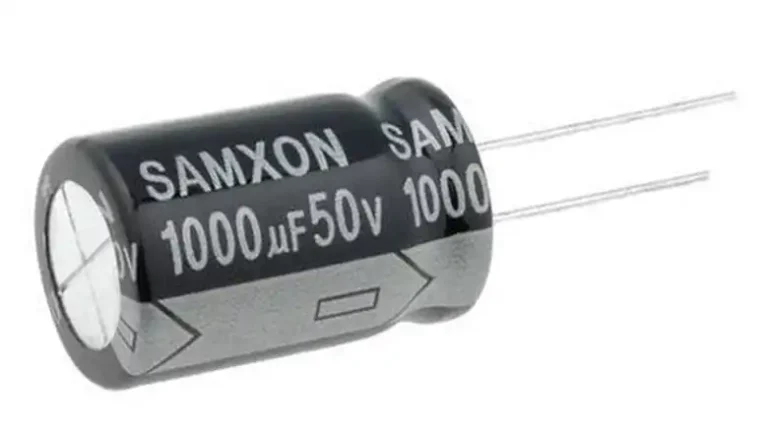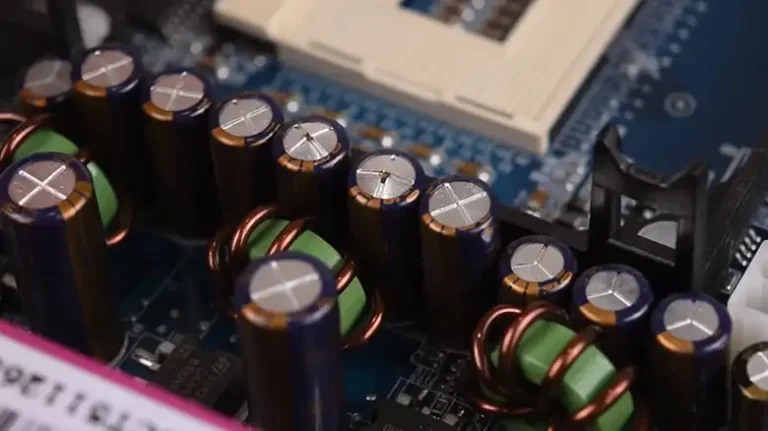Can I Use 25V Capacitor Instead of 35V? [Technically Explained]
Theoretically, you can swap out the value of the low-voltage capacitor for the high-voltage capacitor. However, you must not substitute a low-voltage capacitor for a high-voltage capacitor.
It is advised to use a capacitor with a voltage rating equal to or higher than the circuit’s maximum voltage. Exercise caution when switching from a 35V capacitor to a 25V capacitor. If not, it may result in capacitor failure, a shorter lifespan, poor performance, and potential safety risks.

Is It Okay to Replace 35V Capacitor With a 25V Capacitor?
No, it’s better not to replace a 35V capacitor with a 25V. A capacitor’s voltage rating indicates the highest voltage that may be applied to it without damaging it. It can be harmful to operate a capacitor close to or above its voltage rating. However, the capacitance ought to be fairly constant over the stated voltage range.
1. Capacitor Failure
The 25V capacitor is most in danger of failing right away if its voltage rating is exceeded. This may cause damage to the capacitor, electrolyte leakage, or even explosion. Failure of a capacitor can result in circuit dysfunction, harm to other components, or, in the worst case, electrical risks.
2. Reduced lifespan
Even if a capacitor doesn’t instantly fail, operating it close to or above its recommended voltage might greatly shorten its life. The dielectric material inside the capacitor may deteriorate over time due to the strain of working at greater voltages, resulting in degradation and eventual failure.
3. Performance Issues
Compared to their counterparts with higher voltage ratings, lower voltage capacitors frequently have lower capacitance values. Reduced capacitance by using a lower voltage capacitor could have an impact on the circuit’s overall performance.
As a result, there may be problems with the power supply’s regulation, instability, or diminished filtering or bypassing capabilities. Using 25V instead of 35V increases the possibility of these risks.
4. Safety Risks
Operating components outside of their prescribed voltage ratings can hurt safety. Failure of capacitors due to voltage overloading can result in the release of hazardous materials or electrical shorts that can harm other components of the circuit or even cause injury to nearby people.
5. Graphical Difference
It’s vital to keep in mind that certain capacitor models could show very tiny fluctuations in capacitance with changing voltage, especially in some operating situations or at high frequencies.
It’s vital to remember that the construction, dielectric, and intended application of the capacitor can all have a major impact on the specific behavior of capacitance vs voltage.
It is essential to reference the manufacturer’s datasheet or trustworthy sources that are specific to that capacitor model to receive the most precise and comprehensive information on the capacitance vs voltage behavior of a given capacitor. However, a general discussion is given below.

Fig. 1: A general capacitance vs voltage graph
Shape and behavior
Both 25V and 35V capacitors’ graphs could have a similar overall form, with a comparatively flat line displaying the capacitance as a function of voltage within their rated voltage range. It is crucial to remember that the actual curves may vary as a result of variances in construction, dielectric composition, or other aspects unique to each capacitor model.
Some capacitors, like ceramic capacitors, may show an increase in capacitance as the voltage falls. Voltage coefficient or voltage dependency are terms used to describe this behavior. The increase in capacitance is caused by the dielectric material’s altered electrical characteristics at lower voltages.
Conversely, some capacitor types, such as ferroelectric or electrolytic capacitors, may show a reduction in capacitance with a decrease in voltage. The term “voltage-dependent capacitance” refers to this characteristic. The alignment or reorientation of electric dipoles within the dielectric material as a result of an electric field is what causes it to happen.
Frequently Asked Questions and Answers (FAQs)
Can I use a capacitor that is rated for less voltage than necessary?
Using a capacitor with a lower voltage rating than necessary is typically not advised because it might result in capacitor failure, a shorter lifespan, performance problems, and safety risks.
Can I use a capacitor rated for a higher voltage than necessary?
It is normally okay to use a capacitor with a greater voltage rating than necessary because it can add an extra margin of safety. It’s crucial to check that the capacitor’s physical characteristics and other requirements match those of the circuit.
Last Words
To guarantee a capacitor’s secure and dependable performance, its voltage rating is essential. A greater voltage rating offers an additional margin of safety, whereas employing a capacitor with a lower voltage rating than necessary can result in failure and possible risks. Thus, it is not suggested to use 25V in place of 35V.

![Can I Replace a 16V Capacitor With an 25V Capacitor? [7 Comparison Aspects Explained]](https://www.electronicstalk.org/wp-content/uploads/2023/07/Can-I-Replace-a-16V-Capacitor-With-a-25V-Capacitor-768x431.webp)
![[Explained 4 Facts] Do Capacitors Expire?](https://www.electronicstalk.org/wp-content/uploads/2023/09/do-capacitors-expire-768x431.webp)

![Can I Use a 63V Capacitor Instead of 25V? [Technically Explained]](https://www.electronicstalk.org/wp-content/uploads/2023/07/Can-I-Use-a-63V-Capacitor-Instead-of-25V-768x431.webp)
![[Answered] What Is The Shelf Life Of Capacitors?](https://www.electronicstalk.org/wp-content/uploads/2023/12/What-Is-The-Shelf-Life-Of-Capacitors-768x431.webp)
